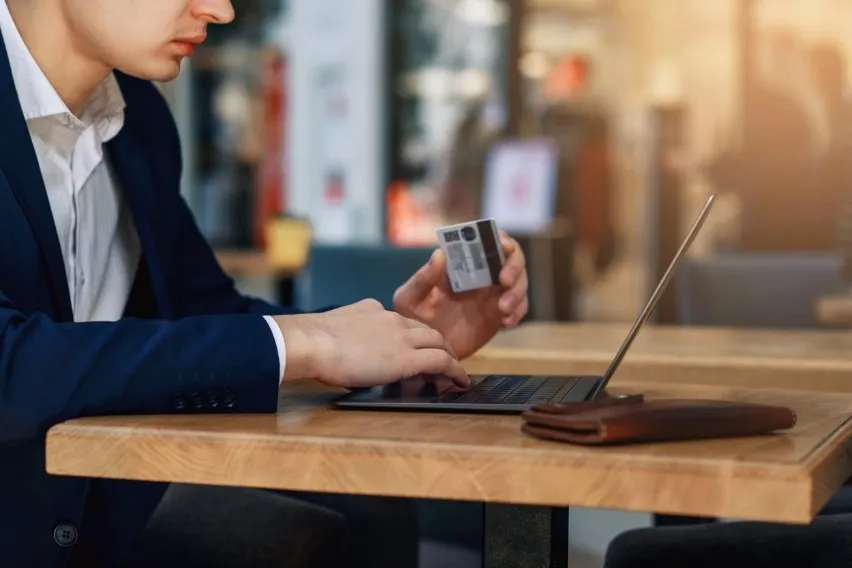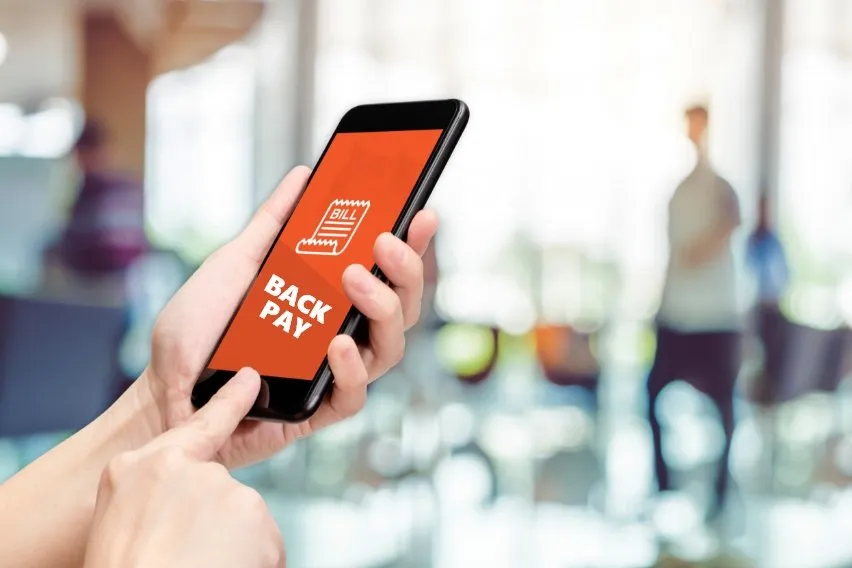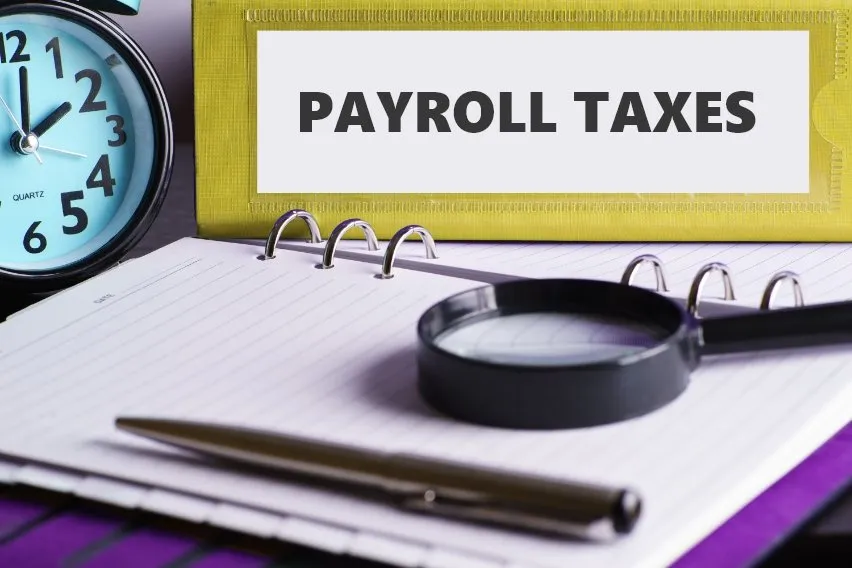What is a Payroll Card & How Do They Work?

A payroll card is a prepaid card that employers can use to pay employees without bank accounts. These reloadable cards offer an alternative to paper checks and direct deposit, making it easier to start paying a worker. Payroll cards are supported by payment processors, meaning they can be used anywhere that electronic payments are supported. Employees can also use a payroll card at an ATM or to make cashback purchases, much like they would use a standard debit card.
In this guide, we’ll explain how payroll cards work. We’ll also be explaining the different types of payroll cards, discuss their pros and cons, and tell you everything you need to know in order to decide whether payroll cards are a viable option for your business. Let’s take a look.
Table of Contents
- How Do Payroll Cards Work?
- Types of Payroll Cards
- Pros and Cons of Payroll Card
- Enhance Payroll Efficiency with FreshBooks Payroll
- FAQs on Payroll Card
Key Takeaways
- A payroll card is a method of paying employees that doesn’t require checks or direct deposit—the employee doesn’t need a bank account to get paid with a payroll card.
- Payroll cards can be used anywhere electronic payments are accepted, such as at ATMs, in stores, and sometimes for online purchases and paying bills online.
- There are 4 kinds of payroll cards: branded payroll cards, personalized cards, instant-issue payroll cards, and portable cards.
- Payroll cards have several advantages—they’re easy to set up, save the employer money on paper checks and direct deposit admin, and offer a reliable payment method.
- Payroll cards have downsides, too—they often have fees for various operations and transactions, can be stolen and used like a debit card, and can be subject to withdrawal limits.
- By law, employers are required to offer one additional option for payroll besides payroll cards, such as direct deposit or paper checks.
How Do Payroll Cards Work?
Payroll cards work quite similarly to other payroll methods, except the employee’s pay is transferred onto their card rather than to the employee’s bank account by check or direct deposit. On payday, the employer deposits the employee’s wages for the last pay period onto their employee’s payroll card. The employee then uses that card to access their funds, much like a gift card or prepaid debit card.
Payroll cards can be used to make cash withdrawals from ATMs and make purchases with debit machine terminals in stores. Depending on the type of payroll card, they might even be able to use their payroll card for online purchases, such as online shopping or paying bills.
While cards can be a great option for payroll, it’s important to note that, legally, you must offer at least one other way to pay your employees. This means you’ll also need to be prepared to pay employees via direct deposit to their bank accounts or by paper check if they wish.

Types of Payroll Cards
There are several kinds of payroll cards available—some offer unique features, such as online shopping capabilities or the ability to accept payment from multiple employers. Here are the main types of payroll cards to consider:
- Branded Payroll Cards – These cards carry the logo of major payment networks like MasterCard or Visa.
- Personalized Payroll Cards – One personalizes these cards with the employee’s name. While some people assume the employer can access these cards, this isn’t the case. The employer can’t see how or where you spend money using the card.
- Instant-Issue Payroll Cards – These cards are not personalized and are quickly issued to employees for immediate use. An instant issue payroll card is usually a temporary solution. An employee uses it until they receive their personalized card.
Portable Payroll Cards – Such cards can accept money from other sources, not just one employer. Portable cards are an excellent option for those who have multiple jobs.
Pros and Cons of Payroll Card
Advantages of Payroll Cards
A payroll card is beneficial for both the employer and the employee. Here’s how a payroll card benefits the employer:
- Cost Cutting: Employers don’t have to waste resources to print paper checks. Instead, they can use a payroll card to deposit money into their employees’ accounts.
- Simple to Set Up: Most cards are easy to set up. Payroll card providers do most of the work and can have the cards ready in a matter of minutes. Moreover, if employees have an issue with the card, they don’t go to the employer. Instead, they go to the payroll card provider. This means the employer has essentially no access to employees’ finances.
- Reliability: Paper checks can suffer from damage. When that happens, employers need to issue another check, and employees have to wait to access their money. With payroll cards, this is never a problem. Employers can be 100% sure that employees receive their money.
Here’s how an employee benefits from a payroll card:
- Quick Access: One of the greatest advantages of a payroll card is that it provides instant access to funds on the card. Once the employer deposits the money, employees can withdraw cash, pay fees, make bill payments, shop online, etc.
- Ease of Use: Payroll cards are incredibly easy to use, even if the employee doesn’t have a checking account. Any location that accepts debit cards also accepts payroll cards. This means employees can use them at grocery stores, outlets, pharmacies, or gas stations.
- Financial Wellness: Many payroll card programs offer their customers different tools that promote financial wellness. Such tools can help employees save money and plan their budgets efficiently.
- Discounts: Many payroll card programs cooperate with different retailers. Together, they offer excellent discounts to their customers.
- Earned Wage Access: Earned wage access (EWA) is among the most significant benefits of payroll cards. This financial service allows employees to access a part of their already-earned wages before payday. Thanks to EWA, employees can avoid taking a payday loan or using their credit card if they need some money right away.
- Easy Money Management: Many cards come with apps that enable employees to check their account balance and transaction history without paying fees.
Disadvantages of Payroll Cards
While payroll cards have many advantages, they aren’t flawless. It’s important to consider some of their drawbacks:
- Lost or Stolen Cards: There’s always the risk of a payroll card getting lost or stolen. This isn’t a problem if the employee immediately notices the card is missing. However, if this doesn’t happen and the card ends up in the wrong hands, you might have funds stolen from the account. Since many shops and grocery stores don’t ask for identification, someone could use the payroll card as their own. Fortunately, a lost or stolen card doesn’t represent a problem if the employee acts quickly. They must report it to the appropriate financial institution ASAP.
- Potential Fees: Depending on the payroll card type, employees may need to pay ATM withdrawal fees when accessing their funds.
Maximum Withdrawal Limit: Some ATMs have a maximum withdrawal limit. If an employee needs to withdraw their entire paycheck at once, they may not be able to do so. This can be a problem if the employee needs the money urgently.
Enhance Payroll Efficiency with FreshBooks Payroll
Payroll cards are a quick, easy way to set up payments to your employees, particularly those without a bank account. Payroll cards can be an efficient, simple option in almost all industries, but you can streamline the payroll process even further by using quality payroll software.
FreshBooks Payroll software powered by Gusto is an all-in-one solution designed to help you simplify your payroll management. It automates large parts of the process, reducing the time spent manually processing payroll and greatly reducing the risk of costly errors. If you’re curious to see how FreshBooks and its integrated software options can help your business thrive, try FreshBooks for free today!

FAQs on Payroll Card
Still curious about how payroll cards work? Get the answers with these frequently asked questions.
Can You Withdraw Cash From a Payroll Card?
Yes, you can use a payroll card to access an ATM and withdraw cash. Keep in mind that you may need to pay ATM withdrawal fees.
Can You Transfer Money From a Payroll Card to a Bank Account?
Whether or not you’re able to transfer money from a payroll card to a checking account depends on the payroll card provider. It also depends on the program chosen by the employer. If you want to make the transfer, it’s best to check with your bank.
What Fees Are Associated With Using a Payroll Card?
Fees vary depending on the payroll card program you choose, but they may include monthly account fees, inactivity fees, activation fees, ATM withdrawal fees, non-payroll cash reload fees, transaction fees, bill pay fees, and out-of-network transaction fees.
How Do I Check the Balance on My Payroll Card?
You can check the balance on your payroll card at an ATM, through the app connected to the card, or by visiting the website of the payroll card provider. Many providers also enable users to call a toll-free number and check their balance.
Direct Deposit vs. a Payroll Card
With payroll cards, employees do not need a bank or credit union account to get paid, which is the main difference from direct account deposit, which requires a checking account to work. You usually can’t deposit money onto a payroll card, meaning they’re not suitable as a savings vehicle like a bank account is.
What is the difference between a payroll card and a debit card?
A debit card is issued by your bank and linked to your account, while a payroll card is similar to a prepaid card, which is loaded by your employer. Unlike a bank card, you can’t overdraft on a payroll card, and you typically can’t deposit money onto it.
Can I put money on my payroll card?
Typically, you cannot load money onto a payroll card yourself—they’re not intended for use as a savings account. Some programs allow non-payroll cash reloads, but these will be subject to additional fees.
Do you need a bank account for a payroll card?
No, you don’t need a bank account to get a payroll card. This is the main advantage of a payroll card, as it lets you get paid without having to open a checking account. However, you usually can’t deposit money onto your payroll card, and the balance doesn’t generate interest.
How do workers receive money when given payroll cards?
Workers receive money with a payroll card when their employer loads the card with their wages on payday. It’s like a gift card that is regularly reloaded by the employer, granting the employee access to their pay directly through the payroll card.
Reviewed by
Sandra Habiger is a Chartered Professional Accountant with a Bachelor’s Degree in Business Administration from the University of Washington. Sandra’s areas of focus include advising real estate agents, brokers, and investors. She supports small businesses in growing to their first six figures and beyond. Alongside her accounting practice, Sandra is a Money and Life Coach for women in business.
RELATED ARTICLES



 Back Pay: Definition, Process & Best Practices
Back Pay: Definition, Process & Best Practices Payroll Taxes: What Are They & How to Calculate Them
Payroll Taxes: What Are They & How to Calculate Them How Much Does Bookkeeping Cost?
How Much Does Bookkeeping Cost? How To Pay Independent Contractors In 2025
How To Pay Independent Contractors In 2025